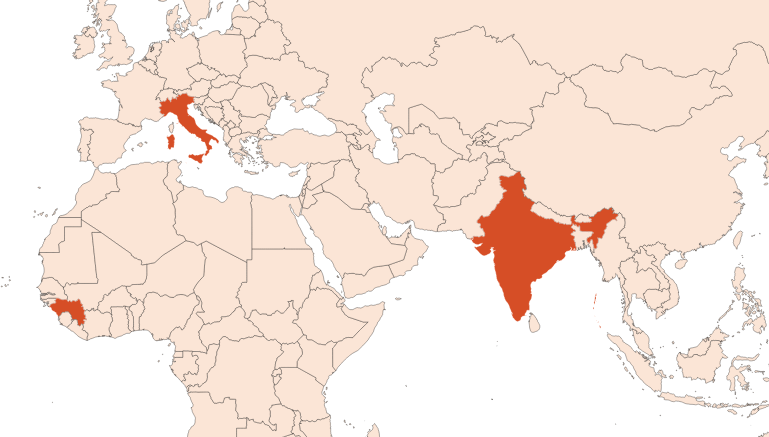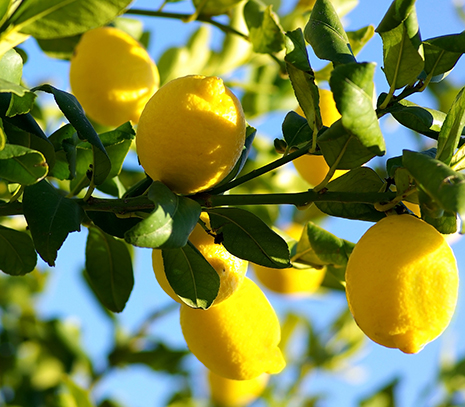| Company | Ingredient Name | ID | Comments | Naturality | Certifications | Purity | Latin name | Treated part | Geographical origin | MOQ |
|---|---|---|---|---|---|---|---|---|---|---|
|
|
Huile Essentielle de Petit grain Citronnier - 30 gr | - |
Visit website
|
- | - | - | - | - | - |
General Presentation
-
CAS N° : 8048-51-9
-
EINECS number : 84929-31-7
-
FEMA number : 2853
-
Appearance : Colorless liquid
-
Density : 0,860 - 0,887 @20°C
-
Volatility : Head/Heart
-
Price Range : €€€
Physico-chemical properties
-
Optical rotation : Donnée indisponible
-
Vapor pressure : Donnée indisponible
-
Refractive Index @20°C : Donnée indisponible
-
Acid Value :
-
Flash Point :
Uses
Uses in perfumery :
Useful in citrus or fruity notes for a fresh touch.
Major Components :
- D-Limonene (35-40%)
- Citral (25-30%)
- Linalool (≈7%)
- Linalyl Acetate (≈5%)
- Beta-Pinene (≈4%)

Photo credits: ScenTree SAS
Botanical name :
Data not available.
Botanical profile :
The lemon tree is a tree of the Rutaceae family and the Citrus genus.
Chemotypes :
The genus Citrus includes the vast majority of citrus fruits and includes a large number of varieties available in perfumery:
Bergamot - (Citrus bergamia) is a hybrid of lemon and bitter orange, grown for the essential oil of its fruit and petitgrain.
Bitter orange or bigarade orange - (Citrus aurantium), grown in Spain and Florida.
Citron - (Citrus medica), grown in Italy (Sicily).
Lemon - (Citrus limon), cultured in Italy for the essential oil of its fruit and of its leafy twigs (Petitgrain).
Combava - (Citrus hystrix), grown in Thailand and India.
Lime - (Citrus aurantifolia), grown for its fruit in Mexico for the most part.
Mandarin - (Citrus reticulata), grown mainly in Italy for its fruit and for its petitgrain, by extracting the leaves from the tree. Its hybrid with sweet orange gave birth to clementine.
Orange - (Citrus sinensis) is famous for the cultivation of its fruits, whose juice and essential oil are extracted in Brazil and California in particular, which is the most used of all perfumes.
Grapefruit - (Citrus paradisii) of Malay origin, is cultivated for its essential oil in Brazil and Israel in particular.
Yuzu - (Citrus junos), produced in Japan and Korea.
Extraction process :
The lemon tree is a thorny shrub, 3 to 8 meters tall, with evergreen leaves and white flowers. As for the petitgrain bigarade, the leaves of the tree concentrate a fragrant principle that can be extracted by steam distillation.
Harvest is usually done between November and May, when the foliage of the tree is the densest. The leaves are cut manually, stored in a large container and taken to the factory. There, the leaves are dried in the sun for a few hours. Then, they are put in the extractor to be hydro-distilled.
Water vapor drags the fragrant molecules to a refrigerant and the essential oil is collected at the end of the process, by decantation of the water.
The fruit of the lemon tree gives an essential oil by extracting the zest of the fruit under cold expression, Lemon EO.
Other comments :
Citrus currently suffer from a disease called ''citrus greening ''. This disease is deadly for citrus fruits and no treatment exists. It is transmitted by a vector insect that attacks young shoots: the psylla. This results in the premature death of many trees and therefore the decline in the general production of the essential oil and its quality (reduction of the D-Limonene level).
Stability :
Limonene tends to convert into Carvone through time, and to give a minthy note to the oil
The terpenes identified in this raw material can polymerize when they are oxidized
Citral contained in the essential oil can convert into diethylacetals in stability tests, without modifying the raw material’s smell
Regulations & IFRA
Allergens :
D-Limonene - Geraniol - Citral - Linalool
IFRA 51th :
This ingredient is restricted by the 51th amendment
Annexe I :
Some regulated synthetic ingredients are found in nature and in certain proportions in natural ingredients. This presence in nature has to be taken into account when calculating limits of use recommended by the IFRA. In case you do not know these concentrations, you can use the ones estimated by the IFRA. Here they are :
| List of regulated compounds contained in this ingredient | ||
|---|---|---|
| Regulated ingredient name | CAS N° | Estimated Concentration |
| Citronellyl acetate | 150-84-5 | 0,2 |
| Citral | 5392-40-5 | 23 |
| Citronellal | 106-23-0 | 1 |
| Geraniol | 106-24-1 | 2 |
| (E) 3,7-Dimethyl-3,6-octadienal (iso-Geranial) | 72203-98-6 | 0,5 |
| (Z) 3,7-Dimethyl-3,6-octadienal (iso-Neral) | 72203-97-5 | 0,2 |



